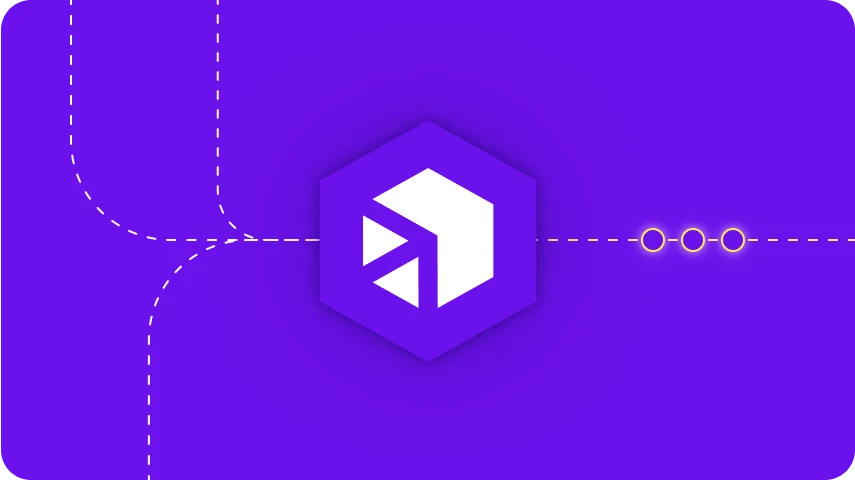July 13, 2023
A integração continua a ser uma prioridade para qualquer organização que deseja permanecer competitiva em um mundo digital em primeiro lugar. Na verdade, 71% das empresas estão planejando ativamente adotar, complementar ou substituir sua tecnologia de integração. Mas o que acontece quando sua solução de integração está atrapalhando você?
Muitas empresas enfrentam desafios contínuos, mesmo depois de investir pesadamente em sistemas iPaaS tradicionais, como o MuleSoft. E não estamos falando de amendoim. Para a maioria das empresas, é um investimento significativo, com gastos de integração estimados em US$ 720 bilhões a US$ 1.12 trilhões globalmente em 2023.
Mesmo depois de pagar caro pelo MuleSoft, inclusive para suporte e manutenção, a empresa também deve pagar para certificar seus desenvolvedores, um investimento contínuo necessário simplesmente para que você possa continuar usando o software.
>> Agende uma demonstração personalizada com nossa equipe de especialistas e veja como o iPaaS da Digibee trará eficiência ao seu negócio.

Sua lista de pendências de integração está crescendo
O MuleSoft, por mais poderoso que seja, não atende a todas as suas necessidades de integração. Com base no feedback dos clientes da Digibee que usaram (ou ainda usam) o conjunto de produtos, o modelo de preços é complexo, há falta de suporte integrado e a tecnologia pode ser difícil de usar.
Esses três fatores MuleSoft impactam a largura de banda de seus desenvolvedores, especialmente quando se trata de dar suporte a projetos de TI que requerem integração. O resultado? Um backlog de TI da MuleSoft.
À medida que diferentes projetos de TI se acumulam, sua equipe de TI é forçada a priorizar. Integrações críticas para os negócios que afetam significativamente as operações diárias? Iniciativas de experiência do cliente para aumentar a participação no mercado? Infraestrutura de marketing modernizada para fornecer melhor inteligência para o negócio? Muitos projetos definham e a lista de pendências de TI da MuleSoft continua a crescer.
Normalmente, os sistemas de toda a organização superam os projetos departamentais. Processos que mantêm as luzes acesas vencem implementações focadas em crescimento, conveniência ou eficiência. Dado o quanto você gastou na implantação do MuleSoft, faz sentido que você se concentre nos trabalhos maiores.
No entanto, a aceleração da evolução tecnológica está trabalhando contra você. À medida que os sistemas legados se tornam cada vez mais arriscados e difíceis de manter, novas integrações de maior prioridade surgirão e projetos menos vitais serão adiados, e voltarão, e voltarão novamente.
Enquanto seus desenvolvedores certificados pela MuleSoft continuam a diminuir a lista de integrações críticas para os negócios, o restante de sua equipe de TI é deixado para se concentrar na criação, manutenção e reconstrução de integrações ponto a ponto manualmente – um uso ineficiente de seu tempo . Além disso, departamentos com integrações de prioridade muito baixa podem recorrer às suas próprias soluções, criando uma colcha de retalhos de correções que aumentam os riscos de segurança e governança – e criam problemas que seus engenheiros de software eventualmente precisarão voltar para avaliar o que foi feito e corrigir.
Como o Digibee ajuda?
A combinação de uma lista de pendências de integração cada vez maior, agravando as ineficiências e a disseminação de soluções obscuras de TI pintam um quadro sombrio. Mas, em vez de investir mais dinheiro e tempo em um ROI MuleSoft já instável, muitas organizações estão optando por investir na moderna plataforma de integração como solução de serviço (iPaaS) da Digibee.
Enquanto alguns de nossos clientes pretendem substituir a implantação do MuleSoft pelo Digibee, outros implementam o Digibee para trabalhar em conjunto. Independentemente do modelo, o Digibee é mais fácil de usar, acessível a todos os níveis de experiência em desenvolvimento de software e muito mais barato do que pagar por mais licenças e certificações para expandir uma equipe de TI reconhecidamente cara.
Aqui está o porquê Digibee é a escolha inteligente para aqueles que enfrentam um atraso no projeto de integração:
Low-code para codificadores profissionais
- Digibee capacita todos os desenvolvedores, desde os mais experientes até aqueles que estão apenas aprendendo o básico. Sua equipe de integração se expande para incluir quase todos, sem a necessidade de pagar por treinamentos ou certificações dispendiosas.
Flexibilidade
- O modelo de implantação da Digibee é flexível, permitindo que as organizações executem na nuvem de sua escolha. Em vez de introduzir limitações ao negócio, a Digibee apóia a progressão da empresa, garantindo que a empresa atinja seus objetivos de integração.
Preços simples
- Nosso modelo de preços simples garante que você não enfrente taxas ocultas ou custos crescentes de treinamento e suporte.
Suporte inigualável (gratuito)
- Oferecemos um modelo único de entrega e suporte, onde construímos seu primeiro pipelines, acelerando o tempo de valorização e eliminando atrasos na integração.
Arquitetura moderna
- A arquitetura moderna do Digibee – baseada em mecanismo e nativa em nuvem – minimiza o risco de interrupções e tempo de inatividade, coexistindo com integrações legadas conforme necessário.
Mas se você decidir rasgar e substituir…
Obviamente, se você perceber o valor considerável de longo prazo na substituição de sua implementação MuleSoft existente em favor do iPaaS da Digibee, vimos muitas organizações fazerem essa transição com sucesso com o mínimo de atrito. Somos especializados na substituição de sistemas legados. Juntamente com MuleSoft, exemplos incluem Tibco, IBM, SoftwareAG e Oracle. Com nosso iPaaS flexível, o Digibee oferece suporte à sua estratégia de integração, independentemente da solução que você possui, lidando facilmente com as integrações, desde as mais básicas e diretas até as muito complexas.
Quando uma abordagem de remoção e substituição faz sentido?
- Se você estiver enfrentando uma atualização demorada e dolorosa, como o EOL do mecanismo de tempo de execução do Mule que requer tempo e esforço significativos
- Se o contrato de sua solução legada estiver prestes a expirar e você souber que ela não atende mais às suas necessidades
- Se você está planejando migrações ou novas iniciativas de tecnologia que exigem uma solução mais ágil e escalável
Deixe a Digibee capacitar sua equipe de integração
Embora possa parecer contra-intuitivo substituir ou implantar uma segunda solução de integração depois de tudo o que você investiu no MuleSoft, os problemas e as oportunidades perdidas que são um subproduto do uso do MuleSoft são aparentes quando você faz uma análise crítica.
O modelo de precificação low-code O iPaaS elimina rapidamente seu backlog de TI da MuleSoft com interrupção mínima, expandindo-se facilmente para lidar com todas as suas necessidades de integração corporativa. Nos deixe mostrar como! Reserve sua opção de uma chamada de descoberta de 15 minutos, uma demonstração personalizada de 30 minutos ou um mergulho profundo de 60 minutos e veja nossa solução em ação.









